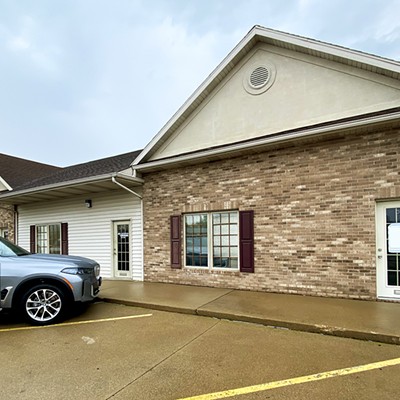As a physician, I support clean energy alternatives that decrease our reliance on coal-powered electricity plants that produce air pollution impacting respiratory ailments and toxic coal ash that has been associated with cancers and nervous system damage.
Suppose you decide to cut your energy costs from City Water, Light and Power (CWLP) and help the environment by installing solar panels on your house. How would you feel if the rules that you used to decide if you were going to put in a solar system were suddenly changed?
Under current rules, the electricity your solar system generates would be used to meet your electric energy needs at the moment. If there is not enough production, you draw additional energy from CWLP and the kilowatt hours (kWhs) utilized are recorded on your electric meter.
If you have excess production, the energy goes through a meter that tracks the kWh overproduction that you “bank” with CWLP. You then exhaust your “bank” before you are billed for any kWh that you pull. Annually CWLP reconciles your “bank.” Any kWhs that are left in your bank are carried over to the next year. The bank remains available to cover your consumption until it is exhausted or you sell your home or business.
So when local companies that install home solar systems talk with a potential customer, they do detailed solar system energy production projections. They determine how much you will save given your energy use and how long it will take for the system to pay for itself in terms of utility savings and excess energy produced.
Now CWLP is proposing that all homes or businesses with solar systems must sell all electricity they produce to CWLP, at a new Distributed Energy Rate “DER” and then buy back the power they need. They would have to sign a proposed CWLP acknowledgment that would indicate that while the DER may currently be the CWLP retail rate, CWLP could change it to an unspecified lower rate in the future.
Any difference between the price that solar energy is sold to CWLP and the price the consumer has to pay to buy it back will impact how long it takes for home solar systems to pay for themselves.
An example will help. If you have a solar system that produces 500 kWh of energy a month and your home uses exactly the same amount of energy, under current rules you pay CWLP $0 for electricity. You would only be billed for your monthly “customer charge” that you pay for being connected to CWLP’s grid.
For the sake of this example, assume that CWLP could purchase all 500 kWh for $0.08/kWh, which would translate to $480/year. If the retail rate to purchase that energy back was $0.12/kWh, which is the average residential rate at present, then you would have spent $720 to purchase back that power. Thus you would pay CWLP $240/year that you didn’t have to pay before.
Any uncertainty regarding the price at which CWLP will buy power from small home solar producers will have a devastating impact on local solar businesses because it will make it difficult for new buyers to price out the benefits of installing a system. People are less likely to install such systems faced with such uncertainty.
Thus it is critical for citizens to write to their alderperson, the mayor and CWLP to oppose any efforts to change from the policy allowing 1:1 price exchange/metering arrangement for residential and small commercial systems. The decision made by the city on this issue will determine if Springfield continues to support the initiative of individual citizens to develop sustainable energy alternatives and lessen our city’s dependence on fossil fuels.
Stephen Soltys of Springfield is a retired physician who teaches with the SIU School of Medicine on a volunteer basis.
CWLP rule would slow Springfield solar
[
{
"name": "Air - MedRect Combo - Inline Content 1",
"component": "11490391",
"insertPoint": "3",
"requiredCountToDisplay": "1",
"parentWrapperClass": "fdn-ads-inline-content-block"
},{
"name": "Air - MedRect Combo - Inline Content 2",
"component": "11490392",
"insertPoint": "7",
"requiredCountToDisplay": "5",
"parentWrapperClass": "fdn-ads-inline-content-block"
},{
"name": "Air - MedRect Combo - Inline Content 3",
"component": "11490393",
"insertPoint": "12",
"requiredCountToDisplay": "9",
"parentWrapperClass": "fdn-ads-inline-content-block"
}
]
Illinois Times has provided readers with independent journalism for almost 50 years, from news and politics to arts and culture.
Your support will help cover the costs of editorial content published each week. Without local news organizations, we would be less informed about the issues that affect our community..
Got something to say?
Send a letter to the editor and we'll publish your feedback in print!





















